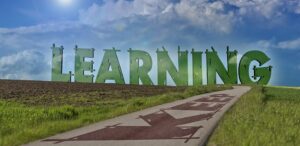
Adult Learners: Maximizing the Opportunities
While the vast majority of college students are technically ‘adults’ (over 18 years old), there are age-related strata within that population that distinguish one group of ‘grown-ups’ from another. Traditionally, the typical college student enters straight from high school or perhaps after a ‘gap year.’ Often, these learners have little or no life experience, may not have held a job, and usually don’t carry obligations (children, family, etc.) that require time and attention.
Recently, however, the nature of the ‘typical’ college kid has begun to change. Today’s colleges are now attracting more ‘older’ learners than ever before. A recent survey indicated that, nationally, more than two-thirds of current college students are not ‘typical’ but instead have returned to school after pursuing other life opportunities, such as jobs, careers, child-bearing, etc. (In California, approximately half of the California Community College (CCC) population is over 22 years and therefore, considered ‘adult.’) This ‘older’ population of ‘adult’ students includes anyone between ~22 and 65 years and that arrive on campus not as neophytes but as individuals with life experience and fully formed expectations about the goals they have for their college education.
In many (if not most) cases, these older students do have experiences and skills that provide a foundation for continuing studies and educational development. And they each present a challenge to the school across virtually all of its departments: serving this varied and colorful population requires flexibility to address the needs of each individual and to ensure that every learner receives not just the education they’re seeking but also the support they need to accomplish that objective.
Different Learners = Different Considerations
According to research by the American Association of Community Colleges, 57% of all college students are over 22 years old, with 35% between 22 and 39 and 8% over 40. The average age is 27. Women now dominate campuses, too, at 58% women to 42% men. Related data shows how the character of the traditional community college student body is evolving, too:
Almost one in three (32%) is a ‘first-gen’ learner, the first in their family to attend college.
More than one in ten (13%) are single parents.
Almost one quarter (23%) are differently abled.
Nearly one in ten (9%) have already earned at least a bachelor’s degree.
The data reveals that today’s community college administration is more complex than ever before. The influx of ‘adult’ learners, each with their unique needs and expectations, is reshaping the educational landscape. This underscores the need for community colleges to adapt and develop new processes that can effectively serve each student, regardless of their age or background.
Adult Learners Add Perspective to the Educational Experience
In many instances, adult learners arrive on campus with a different mindset and expectations than those of their younger, less experienced counterparts. Some of these more mature students have elected a non-traditional path in life and are now picking up the education thread as that opportunity rises as a priority. Others may not have had an earlier educational opportunity at all and are now able to pursue that dream. Some may be completely new to the higher education arena, while others may be returning to complete the diploma or degree process they had abandoned earlier. Still others need ‘upskilling’ to attain a better job for themselves, an occupation for which they don’t qualify but will once they’ve added the necessary credentials that additional schooling will bring.
Not least significant: many people over a certain age who seek a college education do so simply because they feel they can’t reach their full potential without one. This group isn’t always driven by the potential for a higher salary or a broader slate of occupational choices. Instead, they are seeking self-improvement and enlightenment and believe they can achieve those goals in the higher education sector.
Whatever the reason for their late appearance on a college campus, most of today’s adult learners are highly motivated to excel while there, and they work incredibly hard to attain their graduations and credentials.
Evolving Support for an Evolving Population
Adult learners also require a wider variety of services and support to progress through to graduation than their ‘typical’ college student colleagues. For this reason, many campus-based services are realigning their models to prioritize their adult students’ needs, even if that means ‘demoting’ school priorities in the process.
Unlike younger, less mature learners, this population is often considered ‘andragynous,’ a term coined by Malcolm Knowles meaning ‘self-directed.’ Adult learners often arrive with the strong intention to maximize their learning opportunities, rely on their reservoir of experience to aid them in the process, and focus on problem-solving as the goal of their effort. They also bring with them the obligations of their personal lives. Some still work full-time and fit in schooling in their off-hours. Others are busy caring for family or community members. Still others may be accommodating emerging physical or mental health issues that frequently appear as aging advances. The college administration must be prepared to deal with all these realities if it intends to ensure its adult learners can achieve their academic goals.
In response to the influx of older students within the college student body, many schools have adapted or are adapting their practices to accommodate this new set of needs. And, as the support innovations roll out, data reveals which practices provide better results specifically within this population:
When they are able to achieve incremental goals, such as completing a course or finalizing a credential, they are more likely to persist through to graduation. Schools that refine their educational pathways to acknowledge this style of motivation will have adult students achieve better success in their educational journey.
Adult learners are more likely to engage with content that is relevant to them and their situation. Unlike younger learners, who are willing to absorb everything presented to them, older students do better when the material resonates with them on a personal level.
And because they arrive with a full set of skills already in place, ‘prior learning assessments’ (PLAs) are helpful in identifying what types of learning they need and which types they’ve already mastered. In many cases, the PLA can also be used to assign credit for proficiencies gained in life and the work world, which can also be stepping stones toward their next credential or degree.
The concept of ‘lifelong learning’ isn’t new, and the burgeoning population of adult learners attending the nation’s community colleges is a testament to the public’s embrace of that notion. Schools that adapt their services and support systems to accommodate each individual – regardless of age or ability – will ensure that their students gain the most value possible from their higher education experience.


